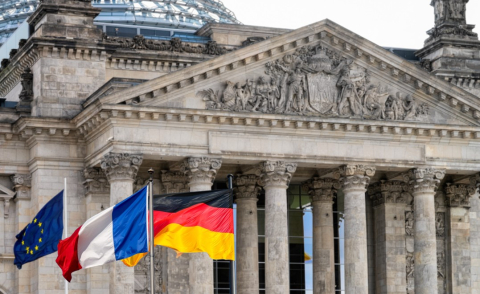Exploring the strengths and weaknesses of European innovation capacity within the Strategic Energy Technologies (SET) Plan

The purpose of this policy report is to explore the strengths and weaknesses of European innovation capacity within the Strategic Energy Technologies (SET) Plan Integrated Roadmap.
The SET Plan Integrated Roadmap groups energy technology priorities in to 13 themes for research and innovation (R&I). As a comprehensive European Energy R&I agenda, the thirteen themes of the Integrated Roadmap have been instrumental to determine the R&I priorities of the Energy Union. The Energy Union R&I priorities have been addressed in the recent Integrated SET Plan Communication, which proposes ten actions to accelerate the energy system transformation that have been identified on the basis of the Integrated Roadmap. Structured around the thirteen themes of the Integrated Roadmap, the aim of this report is to carry out an assessment of energy technology R&I in specific sectors and challenges in the EU. This is done by benchmarking cost, performance and market - readiness levels in relation to other regions of the world using data on the key companies, industries, and research institutes in the EU that are active in a particular area. The analysis is based on available literature and databases and compares the performance of the EU's Energy R&I sector versus other key countries worldwide on the basis of the following key research questions:
1. Based on existing indicators, which indicators can be used to measure the innovation capacity performance of the community in each sector?
2. Who are the key players in the 13 theme areas set out in the Integrated Roadmap, including companies, research institutes, universities and industries?
3. How does the community in Europe benchmark against other leading competitors in the world in the 13 themes?
The SET Plan Integrated Roadmap provides the framework for the assessment of the state of play in each theme in Europe and summarises the challenges. Each Integrated Roadmap theme is discussed in a separate chapter in this policy report. A summary of the methodology employed to gather appropriate data on four key indicators to measure the innovation capacity is described in the next chapter. The four Integrated Challenges and thirteen themes of the SET Plan Integra ted Roadmap are as follows:
- Integrated Challenge 1: Active consumer at the centre of the energy system
Theme 1: Engaging consumers through better understanding, information and market transformation
Theme 2: Activating consumers through innovative technologies, products and services
- Integrated Challenge 2: Demand focus – increasing energy efficiency across the energy system Theme 3: Increasing energy efficiency in buildings
Theme 4: Increasing energy efficiency in heating and cooling
Theme 5: Increasing energy efficiency in industry and services
- Integrated Challenge 3: System optimisation
Theme 6:Modernising the European electricity grid and establishing synergies between the various energy networks
Theme 7:Unlocking the potential of energy storage and conversion of electricity to other energy carriers
Theme 8:Providing the energy system with flexibility, security and cost - effectiveness
Theme 9: Development and demonstration of holistic system optimisation at local/urban level (Smart Cities and Communities)
- Integrated Challenge 4: Secure, cost - effective, clean and competitive supply
Theme 10: Accelerating the development of renewable electricity an d heating/cooling technologies
Theme 11: Enabling carbon capture, CO2 utilisation and storage technologies and increased efficiency of the fossil fuel - based power sector and energy intensive industry
Theme 12: Supporting safe and efficient operation of nuclear systems, development of innovative reactor concepts and sustainable solutions for the management of fissile materials and radioactive waste
Theme 13: Developing sustainable biofuels, fuel cells and hydrogen and alternative fuels for the European transport fuel mix
Each of the subsequent chapters follow a similar structure, starting by describing each integrated challenge and their respective themes and then provide s an analysis of the strengths and weaknesses of each by drawing on publicly available data sources and stakeholder engagement. Each chapter concludes with an overview of Europe’s research and innovation capacity. The report concludes with a summary of the main conclusions from each integrated challenge

Available in:
Regions and themes
Share
Download the full analysis
This page contains only a summary of our work. If you would like to have access to all the information from our research on the subject, you can download the full version in PDF format.
Exploring the strengths and weaknesses of European innovation capacity within the Strategic Energy Technologies (SET) Plan
Related centers and programs
Discover our other research centers and programsFind out more
Discover all our analysesBrazil One Year Away from the October 2026 General Elections
Brazil’s general elections will be held on October 4, 2026, to elect the president, vice-president, members of the National Congress, governors, deputy governors and state legislative assemblies. For the presidential and gubernatorial elections, a second round will be held on October 25 if no candidate obtains a majority of the votes in the first round.
COP30: An Inflection Point for Climate Action and Governance
The 30th Conference of the Parties (COP30), opening in Belém, Brazil, on November 10th 2025, convenes at a perilous moment.
The Strategic Dimension of Skills in the Clean Industrial Deal
In the competitiveness and energy transition battles, the European Union (EU) must master a determinant factor: skills.
The Energy Transition Faces Geopolitical Challenges. How Can Ideological Divides Be Overcome?
President Trump’s positions and policies, combined with record coal consumption and booming global electricity demand, geo-economic confrontation, and widespread concerns about energy security, are changing the game when it comes to understanding realistic decarbonization trajectories. The war in Europe is intensifying competition between defense and transition budgets. This is also the case elsewhere in the world.













